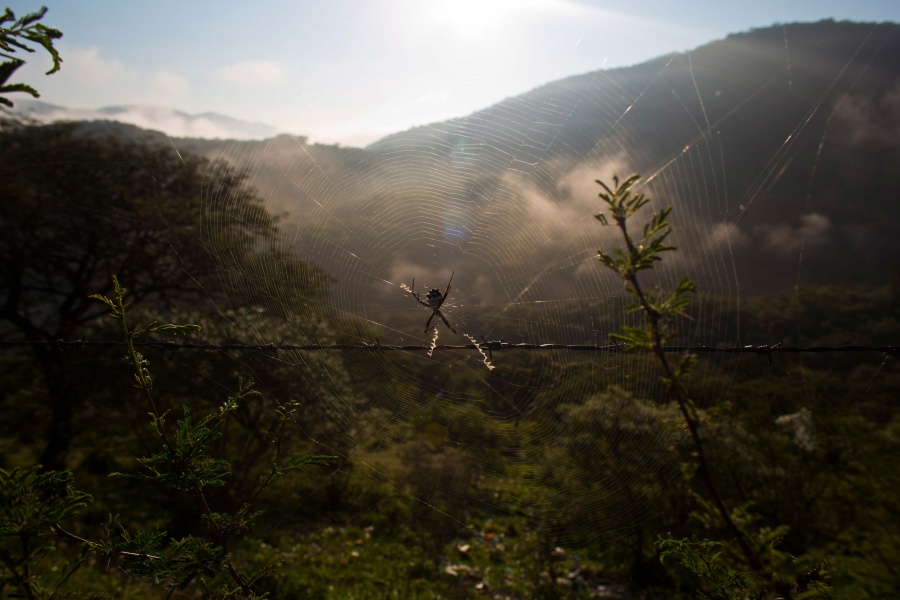
Dario Lopez-Mills / AP Photo
In this Oct. 3, 2015 photo, a dead spider hangs from its web on the side of a road leading to Iguala, in the Mexican state of Guerrero, near the site where taco vendor Carlos Sanchez was last seen, before he was kidnapped by state police along with his wife, sister, and his cousin. The 36-year-old taco vendor, accused of horse stealing, was tortured and beaten to death.

Dario Lopez-Mills / AP Photo
This Oct. 2, 2015 photo shows a framed snapshot of Carlos Sanchez with two deer carcasses, at the home of a relative in Teloloapan, Mexico. In the spring of 2013, four members of Sanchez's family from Guerrero state’s Tierra Caliente, a blistering region of marijuana crops and opium poppies, where drug cartels decapitate their enemies and even priests are not spared a violent death, were abducted near Iguala.
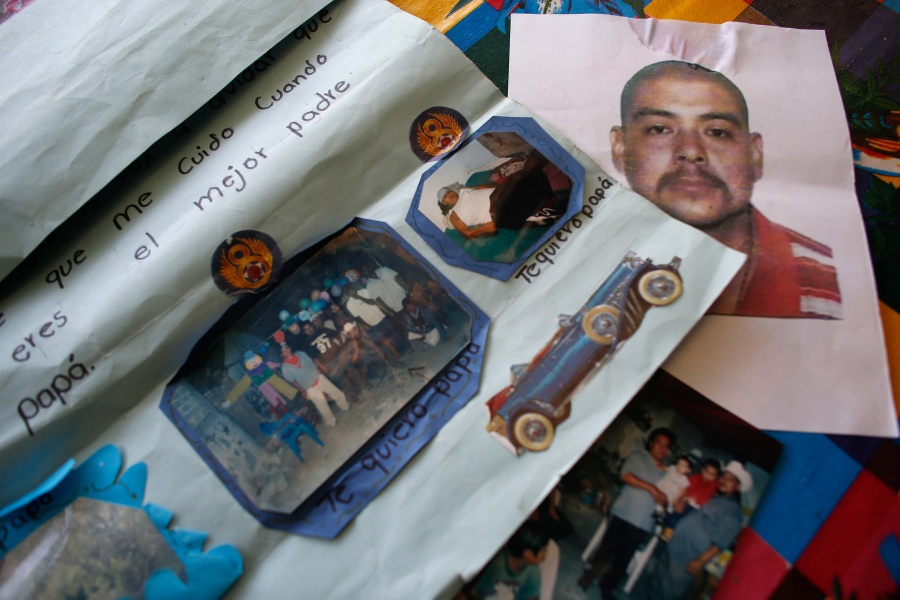
Dario Lopez-Mills / AP Photo
This Oct. 2, 2015 photo show images of Armando De la Cruz Salinas, some pasted onto a Father's Day poster, at his home in Teloloapan, Mexico. The only thing de la Cruz wanted on April 2, 2013, was to take his cousin, Carlos Sanchez, to the hospital so he’d be saved after he was shot outside his home. On the road to the hospital in Iguala, de la Cruz was temporarily blinded as a Guerrero state police truck aimed its spotlight on them from the highway’s shoulder. This was the last time De la Cruz was seen. Sanchez's body was found in an unmarked grave in the mountains outside Iguala in December 2014.
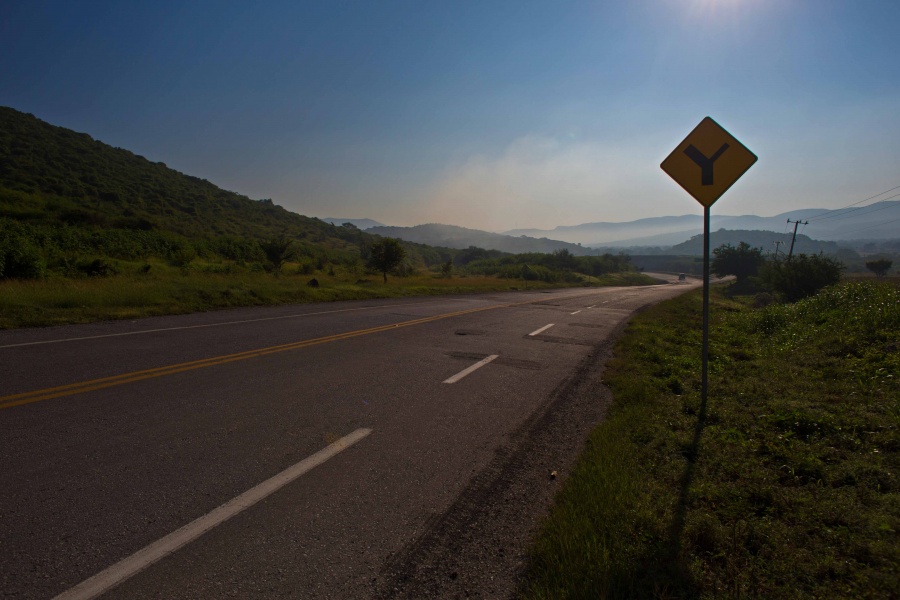
Dario Lopez-Mills / AP Photo
In this Oct. 3, 2015 photo, an empty stretch of highway leads to the city of Iguala, in the Mexican state of Guerrero, near the site where four members of the Carlos Sanchez family were abducted by state police. A stocky man wearing a dark state police uniform opened the front passenger door and pulled Sanchez’s sister out of the car. They thought they had been arrested, until the truck left the asphalt for a dirt road into the mountains. Then they knew they had been kidnapped by police.
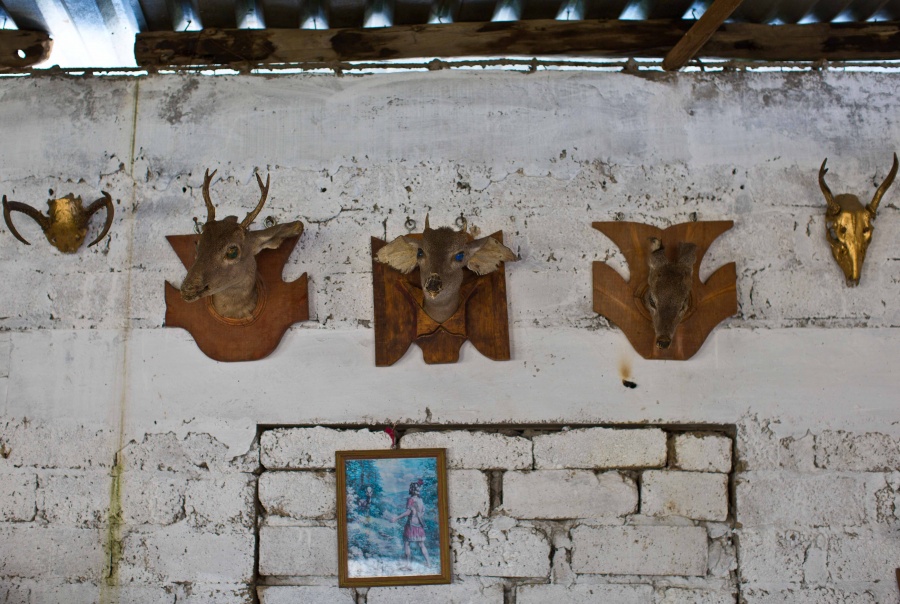
Dario Lopez-Mills / AP Photo
In this Oct. 2, 2015 photo, deer antlers mounted as hunting trophies hang inside the home of Carlos Sanchez, in Teloloapan, Mexico. In the spring of 2013, Sanchez was kidnapped and accused of stealing horses from a ranch in Teloloapan. But Sanchez was not a horseman. He liked hunting and cockfights. He said he had been to that ranch only to sell tacos to the masons who were building stables. By the end of the interrogation Sanchez was dead.
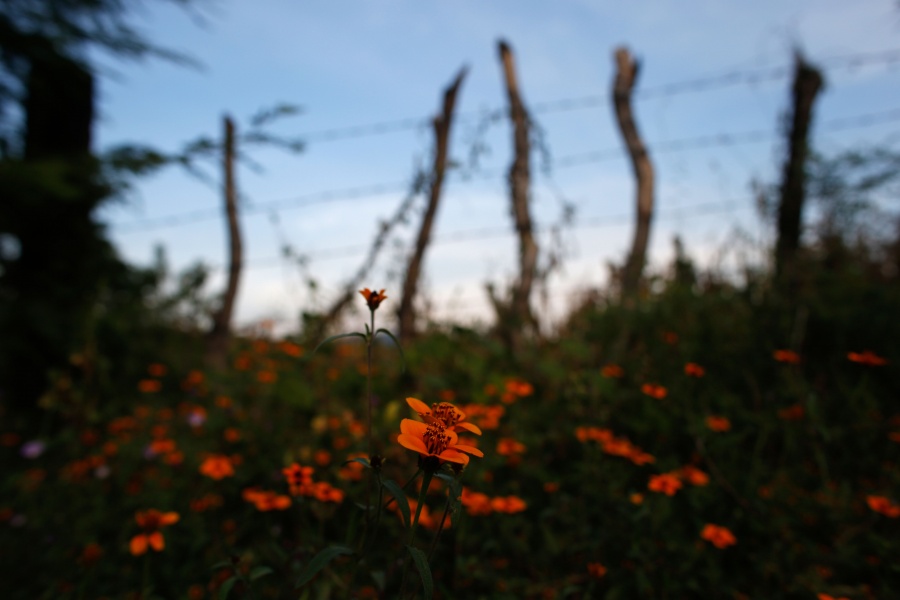
Dario Lopez-Mills / AP Photo
In this Oct. 20, 2015 photo, wildflowers grow in a field where the body of taco vendor Carlos Sanchez and dozens other were found almost a year ago, on the outskirts of Iguala, Mexico. After adding the names of their missing to the lists, many families organized to go into the hills around Iguala to search for bodies of the disappeared. Over many weeks and months, government crews dug up the remains of at least 104 people from unmarked graves found by the families, only 13 of which have been identified by DNA and telltale bits of clothing.
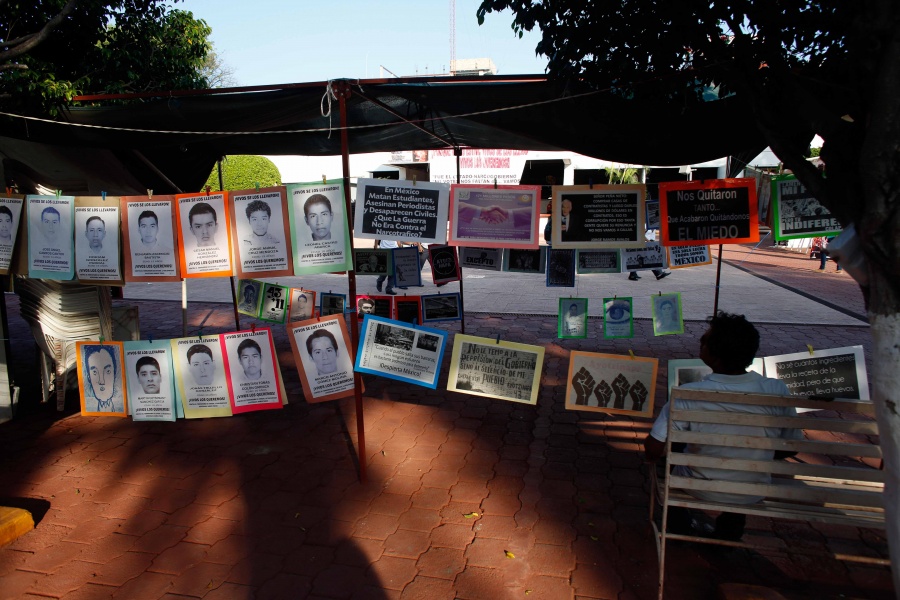
Dario Lopez-Mills / AP Photo
In this Oct. 1, 2015 photo, a man sits next to a permanent installation memorializing the 43 missing students, outside of the municipal palace in the city of Iguala, Mexico. The disappearance of 43 students at the hands of Iguala police on Sept. 26, 2014 began to unveil the scope of police involvement in Mexico’s nearly 26,000 recorded disappearances. Amid national outrage over the students’ abduction, hundreds of families came forward to report their missing relatives, many of them also with the complicity of police.
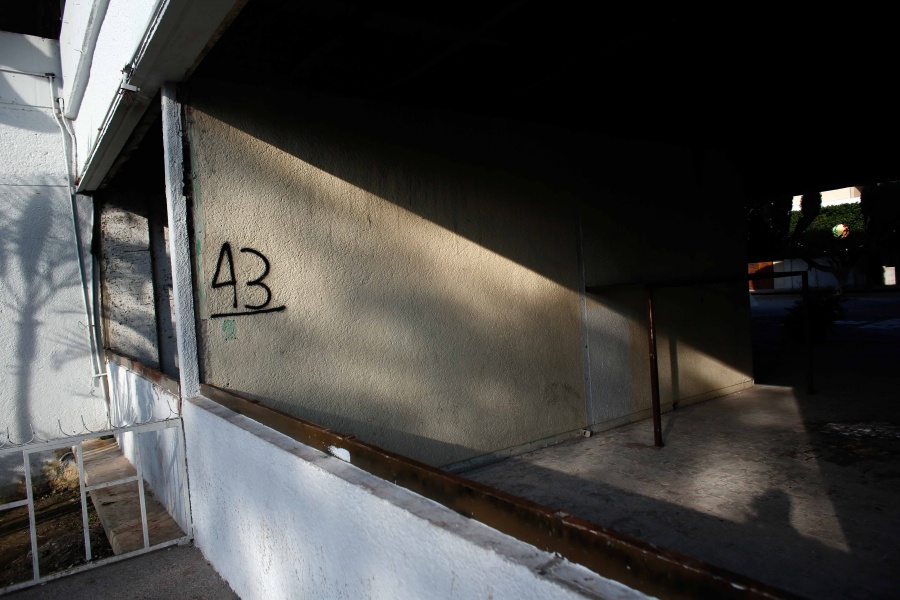
Dario Lopez-Mills / AP Photo
This Oct. 1, 2015 photo shows the number 43 spray painted on a wall of the partially destroyed municipal palace in Iguala, Mexico. The government building was torched by protesters last year in the aftermath of the disappearance of the 43 students on Sept. 26, 2014. A government investigation into the students’ disappearance stated that a top commander of Iguala’s police managed the Guerreros Unidos drug cartel’s police payroll, from the mafia to members of the force. The same commander also oversaw police roadblocks at all of the highway entrances to Iguala--roadblocks that ensured drug loads moved through, that suspected enemies of the cartel were intercepted, and that kidnappers were free to bag their prey.
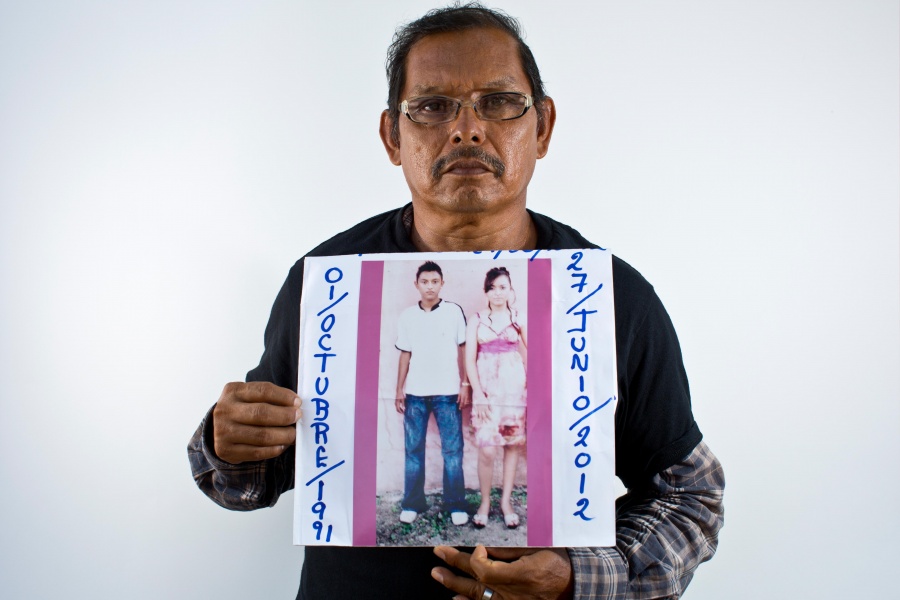
Dario Lopez-Mills / AP Photo
In this May 26, 2015 photo, Jaime Velazquez Betancourt holds up a photo of his son, Jorge Alberto Garcia Valverde, left, and his daughter, Adilene Garcia Valverde, in Iguala, Mexico. On June 29, 2012, Velazquez's son and daughter were just minutes from their home in Cocula returning from dinner with a friend. Witnesses said that between 9:30 and 10 p.m. two Iguala police vehicles stopped them. They took 19-year-old Adilene and 21-year-old Jorge Alberto, along with their friend. None of them have been seen since. The Iguala police told Velazquez they had no record of the arrests and did not have patrol cars in that area that night.
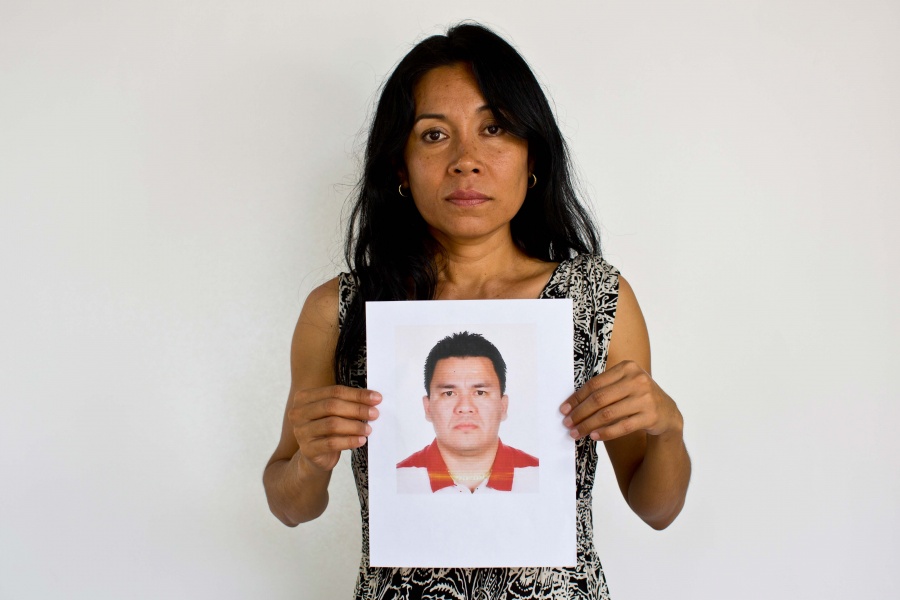
Dario Lopez-Mills / AP Photo
In this May 13, 2015 photo, Adriana Bahena Cruz holds up a photo of her husband, Saulo Rodriguez Cruz, in Iguala, Mexico. Bahena's husband was a detective with the state prosecutor’s office in Iguala. On Jan. 7, 2011, he was in downtown Iguala with his wife and children when he received a call saying there was a development in one of his cases and he needed to come into the office. His wife awoke at 2 a.m. to find he was still not home. When she called him he answered, but she heard the voices of a lot of other men in the background. He said he would be home soon. She never heard from him again.
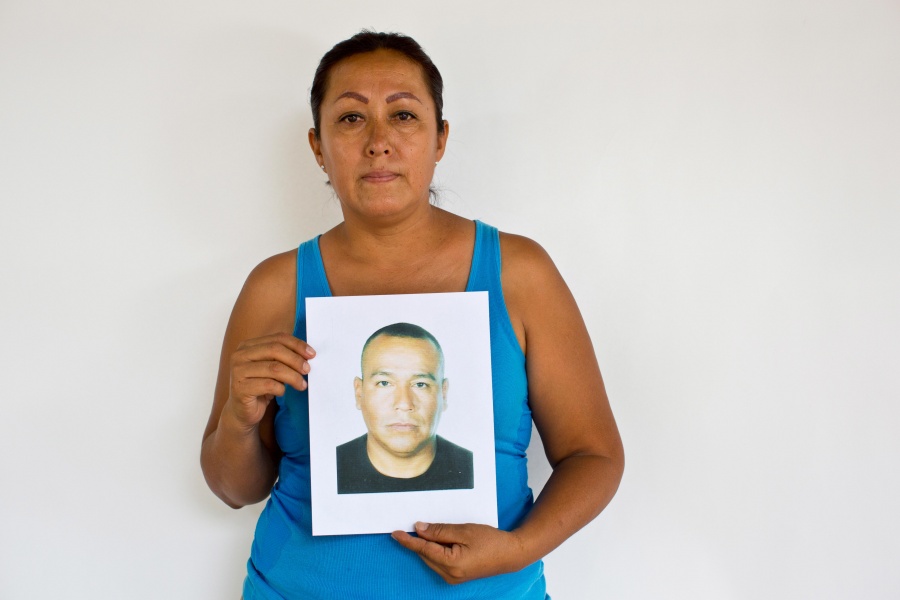
Dario Lopez-Mills / AP Photo
In this May 13, 2015 photo, Maria del Carmen Abarca holds up a photo of her husband, Saturno Giles Beltran, in Iguala, Mexico. Abarca's husband was an Iguala police officer in the department’s stolen vehicles unit. It quickly became apparent to the retired soldier that he was the only clean officer in his unit. He warned his wife and daughters to avoid certain parts of Iguala where police took women, and told them never to come to the police station. He was taking classes for a law degree on weekends, promising his wife, that he would leave the police force as soon as he earned his degree. He disappeared on March 8, 2014, driving to class. He called the next day and without specifying who, said they had allowed him a phone call. He said he was clearing up some questions so he could come home. That was the last his wife heard from him. She fears word got out in the police department that he was going to leave and someone decided not to let him.
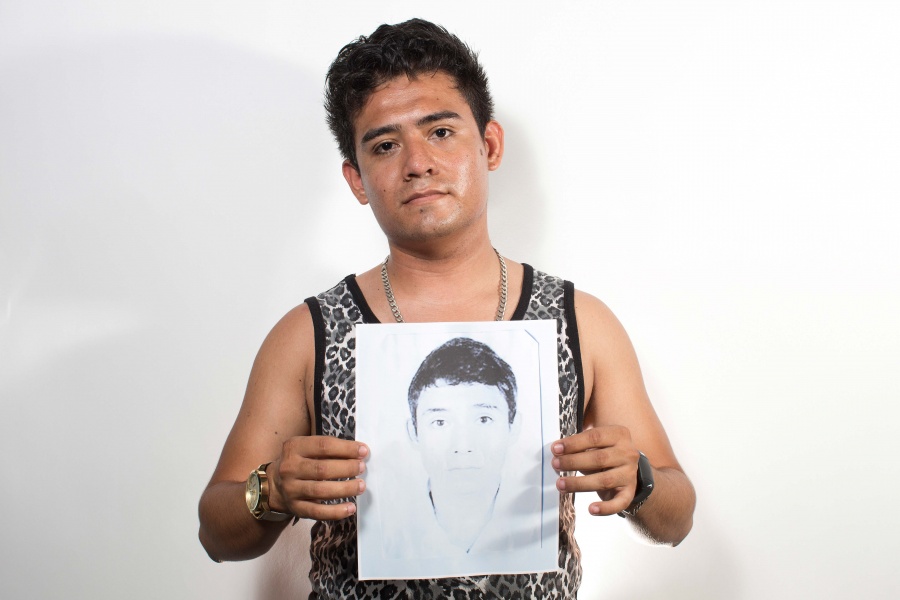
Dario Lopez-Mills / AP Photo
In this Aug. 18, 2015 photo, Marcos Javier Mejia Mazon holds up a photo of his brother, Angel Alberto Mejia Mazon, in Iguala, Mexico. Angel Alberto was at Iguala’s annual fair in February 2013 with a group of friends when he got into a fight with a stranger. Suddenly an Iguala police truck pulled up and arrested Angel Alberto, a 19-year-old student and waiter. The other guy was let go. His friends suspected he had simply tangled with the wrong stranger. His grandfather went to the police station to look for him, but was told they had no record of his arrest.